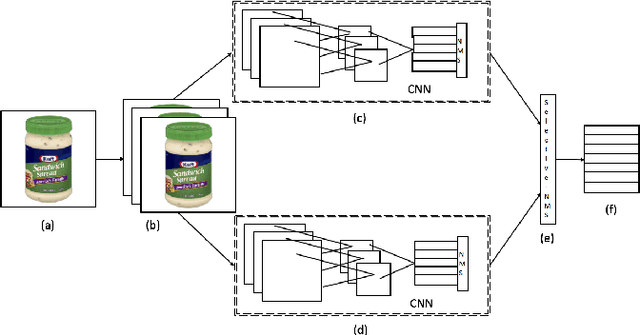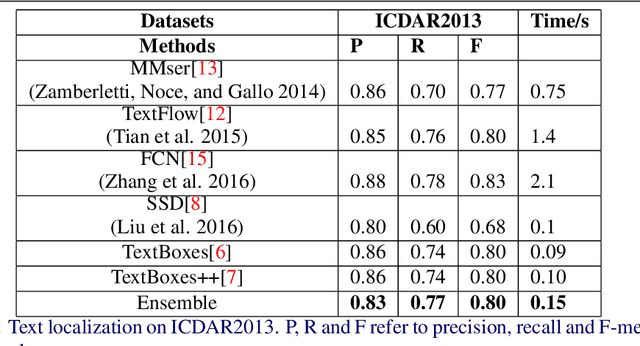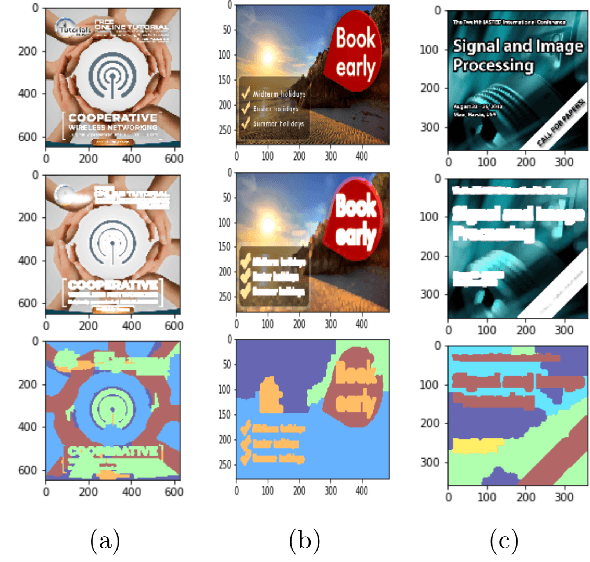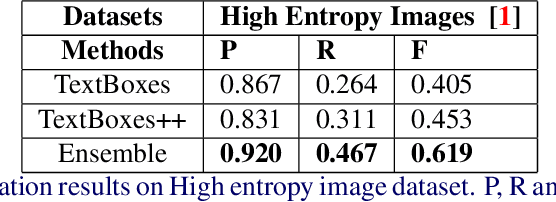Rajesh Shreedhar Bhat
Semi-Bagging Based Deep Neural Architecture to Extract Text from High Entropy Images
Jul 02, 2019



Abstract:Extracting texts of various size and shape from images containing multiple objects is an important problem in many contexts, especially, in connection to e-commerce, augmented reality assistance system in natural scene, etc. The existing works (based on only CNN) often perform sub-optimally when the image contains regions of high entropy having multiple objects. This paper presents an end-to-end text detection strategy combining a segmentation algorithm and an ensemble of multiple text detectors of different types to detect text in every individual image segments independently. The proposed strategy involves a super-pixel based image segmenter which splits an image into multiple regions. A convolutional deep neural architecture is developed which works on each of the segments and detects texts of multiple shapes, sizes, and structures. It outperforms the competing methods in terms of coverage in detecting texts in images especially the ones where the text of various types and sizes are compacted in a small region along with various other objects. Furthermore, the proposed text detection method along with a text recognizer outperforms the existing state-of-the-art approaches in extracting text from high entropy images. We validate the results on a dataset consisting of product images on an e-commerce website.
Upcycle Your OCR: Reusing OCRs for Post-OCR Text Correction in Romanised Sanskrit
Sep 06, 2018



Abstract:We propose a post-OCR text correction approach for digitising texts in Romanised Sanskrit. Owing to the lack of resources our approach uses OCR models trained for other languages written in Roman. Currently, there exists no dataset available for Romanised Sanskrit OCR. So, we bootstrap a dataset of 430 images, scanned in two different settings and their corresponding ground truth. For training, we synthetically generate training images for both the settings. We find that the use of copying mechanism (Gu et al., 2016) yields a percentage increase of 7.69 in Character Recognition Rate (CRR) than the current state of the art model in solving monotone sequence-to-sequence tasks (Schnober et al., 2016). We find that our system is robust in combating OCR-prone errors, as it obtains a CRR of 87.01% from an OCR output with CRR of 35.76% for one of the dataset settings. A human judgment survey performed on the models shows that our proposed model results in predictions which are faster to comprehend and faster to improve for a human than the other systems.
 Add to Chrome
Add to Chrome Add to Firefox
Add to Firefox Add to Edge
Add to Edge